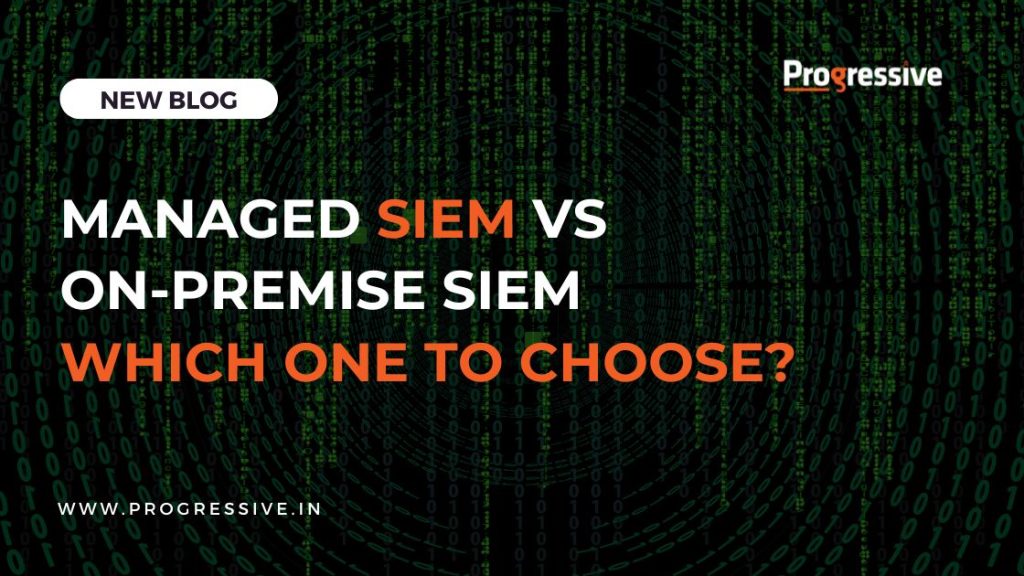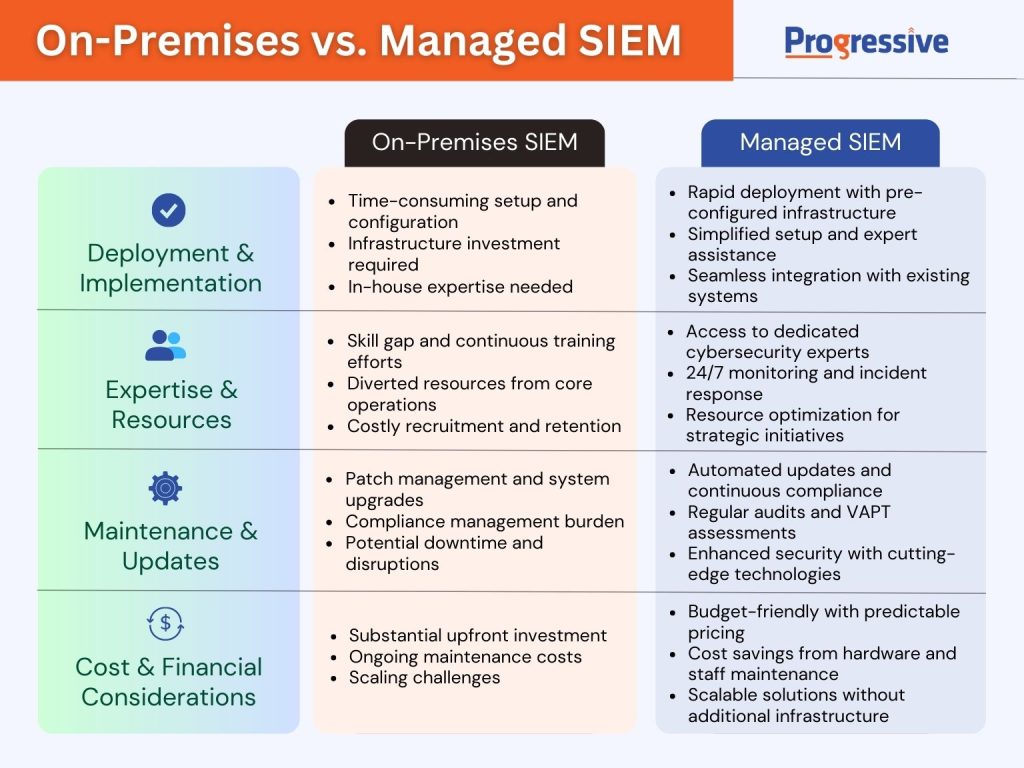
CISOs seek a powerful ally to combat emerging threats. Managed SIEM is a game-changing solution that offers reliable security information and event management. But how does it compare to the traditional on-premises SIEM approach?
Join us as we dissect the benefits and drawbacks, unveiling the ultimate showdown between Managed SIEM and On-Premises SIEM.
What is Managed SIEM?
Managed SIEM, also known as SIEM as a Service, offers an option that differs from deploying and monitoring a SIEM software solution on-premises. Instead, organizations engage a third-party service provider to host a SIEM application on their servers and oversee their network for potential security risks.
Consider the following Cyber Security Trends:
- 75% of executives cite organizational complexity as a significant source of cybersecurity and privacy risks. – pwc
- Given the exponential surge in ransomware attacks and social-engineered attacks, McKinsey & Company forecasts a growing reliance of organizations on service providers and an anticipated 85% increase in cybersecurity investments by small and midsize businesses.
- According to Gartner, by 2023, the majority of SIEM solutions (around 90%) will provide cloud-based capabilities such as log storage, analytics, and incident management. This marks a significant increase from the 20% observed in 2020.
As businesses strive to fortify their defences, a crucial question arises: Should they opt for Managed SIEM or stick to the traditional On-Premises SIEM?
Let’s find out in the following analysis based on 4-key factors.
Here’s Why SIEM as a Service is better than On-Premises SIEM:

Deployment and Implementation
On-Premises SIEM:
- Time-Consuming: Setting up and configuring an on-premises SIEM system involves extensive planning, customization, and integration, leading to delays in deployment.
- Infrastructure Investment: Organizations need to invest in hardware, software licenses, and network infrastructure, further stretching implementation timelines and budgets.
- In-House Expertise: Proper implementation of on-premises SIEM demands a skilled IT team capable of handling complex deployment processes.
Managed SIEM:
- Rapid Deployment: Managed SIEM providers have pre-configured infrastructure, enabling quick and efficient deployment within a shorter timeframe.
- Simplified Setup: Organizations can leverage the provider’s expertise, eliminating the need for complex customization and integration tasks, and saving time and effort.
- Seamless Integration: Managed SIEM providers ensure seamless integration with existing systems and applications, minimizing disruptions during implementation.
Expertise and Resource Availability
On-Premises SIEM:
- Skill Gap: Building and maintaining an in-house team of cybersecurity experts is a complex and costly endeavour, requiring recruitment, training, and retention efforts.
- Training and Knowledge Updates: Keeping the team up to date with evolving threats and technologies demands continuous investment in training programs.
- Diverted Resources: Managing the SIEM system internally diverts valuable resources from core business operations, hindering growth and innovation.
Managed SIEM:
- Access to Expertise: Managed SIEM providers house dedicated teams of experienced cybersecurity professionals, ensuring access to up-to-date knowledge and expertise.
- 360-degree Coverage: Managed SIEM offers 24/7 monitoring, incident response, and threat analysis, guaranteeing robust security coverage round the clock.
- Resource Optimization: By outsourcing SIEM management, organizations can optimize internal resources, focusing on strategic initiatives and core business functions.
Maintenance and Updates
On-Premises SIEM:
- Patch Management: Businesses are responsible for the timely installation of patches, updates, and security fixes, requiring dedicated IT staff and resources.
- System Upgrades: Upgrading an on-premises SIEM solution can be a complex and time-consuming process, involving potential downtime and disruptions.
- Compliance Burden: Businesses must proactively manage compliance standards, including ensuring the SIEM system meets regulatory requirements.
Managed SIEM:
- Automated Updates: SIEM services handle software updates, patches, and security fixes, ensuring the system is always up to date without interrupting operations.
- Continuous Compliance: Managed SIEM providers maintain compliance standards, regularly conducting audits and VAPT assessments to ensure adherence to regulations.
- Enhanced Security: SIEM as a service implements cutting-edge security technologies and protocols, ensuring robust security measures are in place to protect the organization.
Cost and Financial Considerations
On-Premises SIEM:
- Upfront Investment: On-premises SIEM requires substantial capital investment for hardware, software licenses, and infrastructure, straining the organization’s budget.
- Maintenance Costs: Ongoing expenses include hardware maintenance, software updates, and the need for skilled IT staff, increasing operational costs over time.
- Scalability Challenges: Scaling an on-premises SIEM solution can be costly, as it demands further investments in infrastructure and human resources.
Managed SIEM:
- Budget-Friendly: Managed services offers predictable pricing, significantly reducing upfront costs and providing better financial flexibility.
- Cost Savings: With SIEM as a Service, there is no need to maintain hardware or hire dedicated IT staff, resulting in substantial operational cost savings.
- Scalable Solutions: Managed SIEM providers offer flexible and scalable solutions that easily adapt to the organization’s growth, eliminating the need for additional infrastructure investments.
Get Started with Next-Generation Security Incident & Event Management
CISOs are hampered in their ability to stop sophisticated attacks because of process unreliability, long MTTD & MTTR times, and a lack of coverage across hybrid environments. By opting for managed SIEM, they can streamline their cybersecurity efforts, maximize operational efficiency, and focus on driving growth and innovation.
Book A Call to Explore Progressive’s Managed SIEM